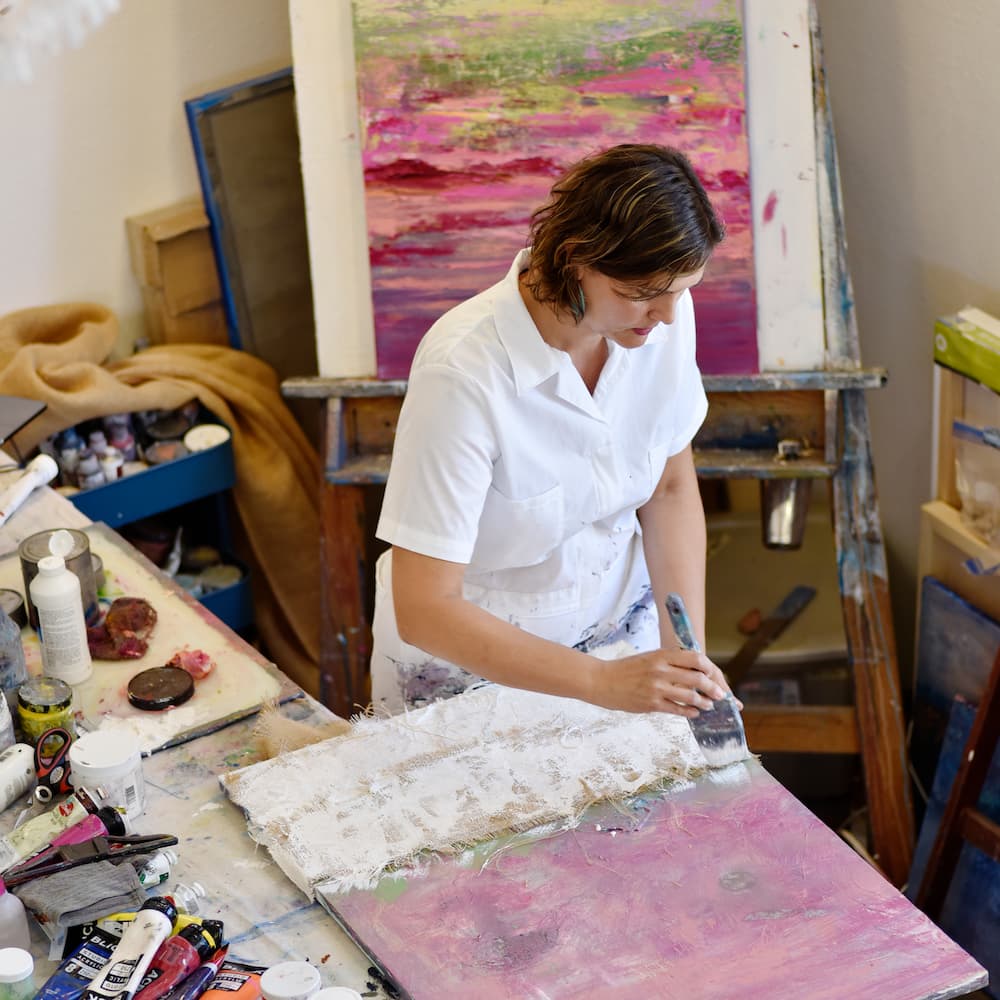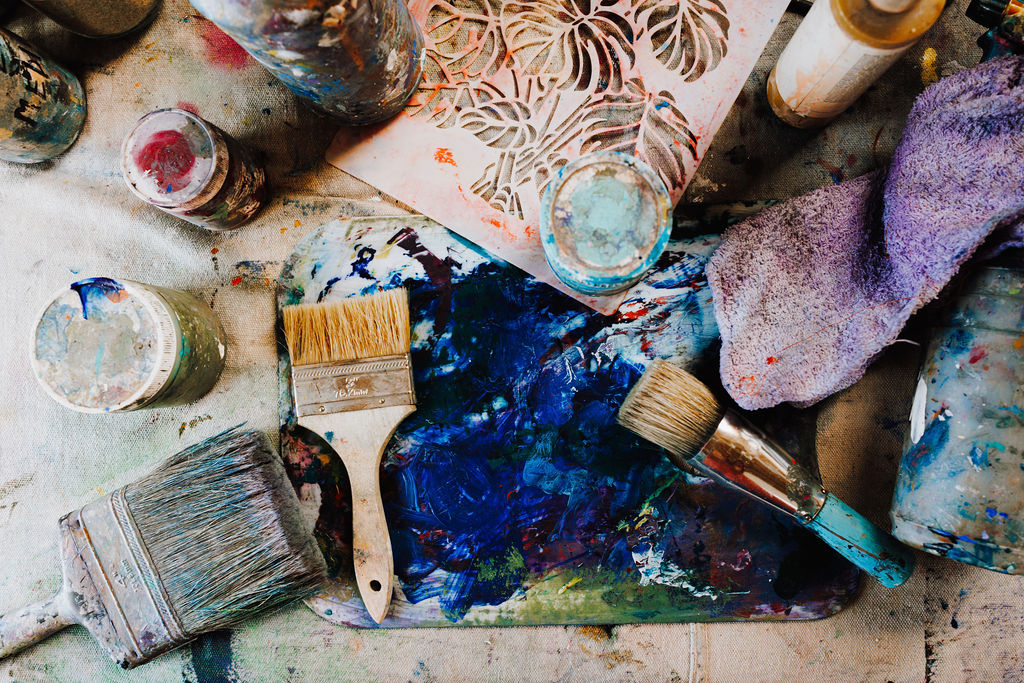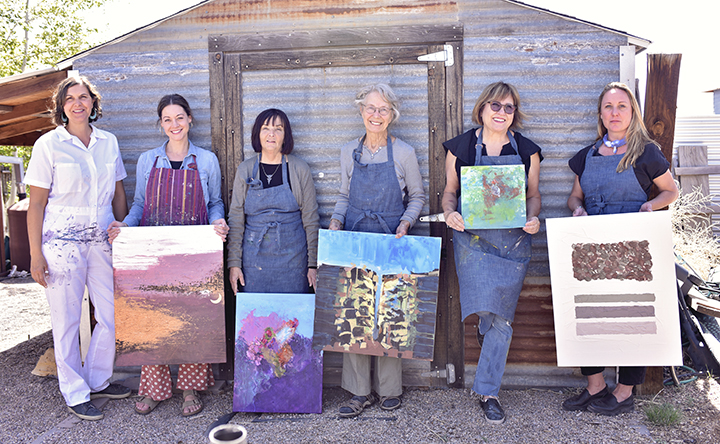Many students report feeling a lack of confidence when starting their painting journey. The fear of not creating something deemed “good enough” often looms large. This fear can be paralyzing, causing some to give up prematurely.
However, it’s crucial to recognize that every artist starts as a beginner. Just as in any skill, mastery in painting takes time and practice. Here are ten tips that will help you stay confident while you are embarking on your painting journey.
1.Let Yourself Be a Beginner
When people start learning a new skill like painting, they often get impatient. Many give up after just a few paintings, thinking they’re not good at it. But just like anything else, getting good at painting takes a lot of time and practice. Whether you’re painting everyday objects or abstract art, you need to develop various skills to express yourself.
Imagine trying to be really good at basketball from the get-go—it wouldn’t happen. The same goes for painting. Improvement takes dedication and practice. It’s important to accept being a beginner, create paintings that might not look perfect, and just keep going.
2. Set Achievable Goals
Malcolm Gladwell’s 10,000-hour rule for mastery might sound overwhelming, but breaking your learning down into manageable goals is key. Instead of fixating on how “good” your painting looks, focus on specific areas for improvement. For instance, target enhancing your composition skills or experimenting with color mixing. By setting achievable goals, you can measure your progress and enjoy the sense of accomplishment along the way.
3. Prioritize the Learning Process Over the Product
Shifting your mindset from the final product to the process of painting is a game-changer. By adopting a student mentality, you allow yourself to explore and learn without the undue pressure of creating a flawless masterpiece. This perspective encourages experimentation and may even lead you to paint over the same canvas multiple times, emphasizing the value of learning over the pursuit of perfection.
After years of painting, the final product will naturally be more important. Giving yourself plenty of time to focus on learning as opposed to the end result will free you up and ultimately help you create better work.

4. Celebrate Progress, Not Perfection
In the pursuit of artistic excellence, it’s easy to fall into the trap of perfectionism. The mantra “Done is better than perfect” serves as a powerful reminder that the goal is progress, not an unattainable ideal. Celebrating the small victories along your painting journey boosts your confidence and keeps you motivated to continue improving. Even professional artists see areas of improvement in their pieces, but the goal is to make a lot of good work, not a few “perfect” paintings.
5. Embrace Mistakes as Learning Opportunities
Mistakes are an inevitable part of the creative process. Bob Ross, the iconic painter, referred to them as “happy little accidents.” Embracing mistakes as learning opportunities not only allows for artistic growth but also introduces an element of unpredictability and creativity. Sometimes, a mistake can transform a piece into something even more intriguing and unique.
On several occasions I have accidentally spilled or dripped paint on my canvas, only to be pleasantly surprised by the results. Embracing a positive attitude in your work sessions will allow you to see these mistakes as assets as opposed to problems.
6. Experiment with Styles and Techniques
Artistic exploration is essential for growth. Trying out different styles, such as abstract expressionism or minimalism, opens up new avenues of creativity. Visiting museums, galleries, and online platforms can provide inspiration and help you discover techniques that resonate with your unique style. The more you experiment, the more enjoyable and personalized your painting experience becomes. Experimentation will also allow you to find your strengths, so play away!

7. Use a Mixed-Media Sketchbook
If the fear of judgment or lack of confidence is holding you back, consider starting in a more private space—like a mixed-media sketchbook. This intimate setting allows you to experiment freely without the pressure of creating a finished piece. You can also close the sketchbook after you are finished, keeping your work private. As your confidence grows, you can transfer your ideas to larger canvases.
8. Create a Positive Environment
Your art-making space plays a crucial role in fostering creativity. Keeping it organized, inspirational, and visually appealing sets a positive tone for your painting sessions. Surrounding yourself with images, quotes, and colors that motivate you creates an environment where you feel excited and comfortable to express yourself.
Besides your creative space, think about becoming part of a community of fellow artist-learners. Connecting with others who are exploring the same art form can provide a valuable support network and a platform for exchanging ideas. Various forums on Facebook and other online platforms offer spaces for this. As an option, I host an art community specifically for students who have finished my abstract painting course, Abstraction Beyond Boundaries.

9. Address Weaknesses Through Study
Identifying areas of struggle in your painting is the first step to improvement. Whether it’s mastering composition, refining brush techniques, or delving into color theory, dedicating time to study and practice is essential. The wealth of information available online, including tutorials and resources, makes addressing weaknesses an achievable and rewarding part of your artistic journey.
10. Take a Class
Formal art classes, whether in-person or online, offer structured guidance for artists at all levels. Even if your primary interest lies in abstract painting, enrolling in beginner drawing and painting classes provides a solid foundation. Learning fundamental skills like shading, highlighting, and understanding 3-dimensional forms enhances your overall artistic abilities.
If you’re interested in exploring abstract painting further, consider joining my online course, Abstraction Beyond Boundaries, where I cover essential aspects like color theory, composition, brush techniques, and more.
Happy painting!
ABOUT ANDREA CERMANSKI
I am an artist out of Santa Fe, New Mexico who has been painting for almost 30 years. I love to teach first-timers as well as experienced painters who need a creative reboot. My work has been displayed in several galleries around the country, and I have a Bachelor’s in Art History, a Master’s in Art Education, and had my work in a show juried by Judy Chicago. The idea of getting more people painting makes me light up as I want to inspire more people to express their creative selves and tap into a place of joy and calm.
WANT TO LEARN MORE?
- Subscribe and get a FREE PDF explaining How to Use My 5 Favorite Mediums or a FREE Ebook on How to Move From Representational Painting to Abstraction
- Check out My Online Painting Course
- Read More Painting Tips Blog Posts
- Learn About 3-Day Painting Retreats in Santa Fe
- Check out My Paintings & Art Prints for Sale
- Follow me on Youtube, Instagram, or Pinterest
Excellent advice. Succinct and relevant. Enjoy the journey. I have no formal background and love to take classes or just experiment. The freedom to express and not judge….it doesn’t get better then that.
Right now I’m moving and all supplies are packed away. Hope to remedy that soon.
Thanks for the feedback, Meris! I agree 100%–we should all paint with freedom and no judgment. Its about the process. Have a good move and hope you get back in the studio soon!